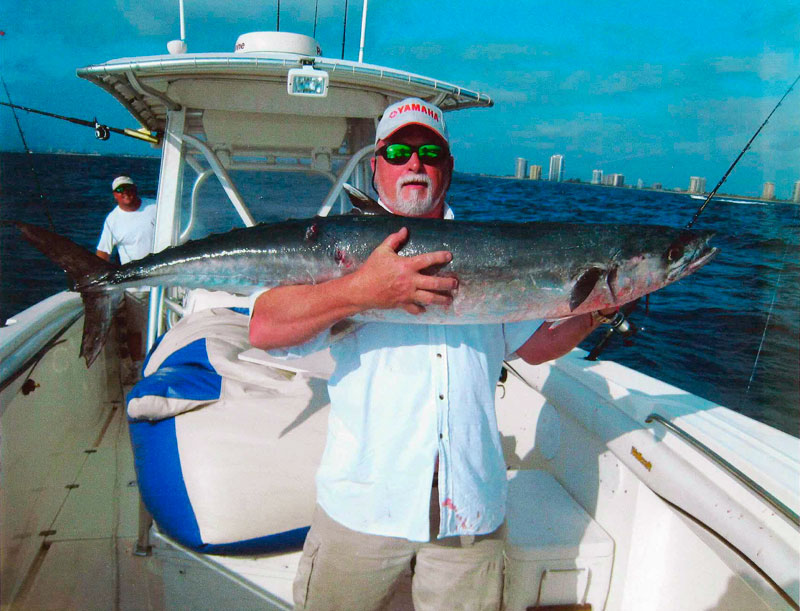
Cooler water temps crank up the king mackerel bite
Once the water temperature begins to drop, schools of hungry king mackerel move to just off the beaches of southern North Carolina. This typically begins in September and continues through October. And sometimes it lasts into November.
The two keys are an abundance of forage fish and cooling water. The kings feel one, and it trips a trigger, telling them to consume all they can of the other to bulk up for leaner times during the winter.
King mackerel, from young of the year to patriarchs and matriarchs that have prowled the ocean for years, heed this call to feed. They follow bait schools and may be just behind the breakers or scattered out to the many rocks, wrecks and artificial reefs in the area. They are feeding without reservation. And this is a great time to catch some of the big girls that are often wary and avoid hooks at other times of the year.
Dieter Cardwell of Southport, N.C., knows these kings well. As captain of the Tide Line, he has led his crew to two wins in the U.S. Open King Mackerel Tournament, which has been the largest king mackerel tournament in the U.S. for the past several years and is held annually from Southport the first weekend of October.
Slow-trolling live baits is a great strategy
“We’re blessed with good king mackerel fishing in this area all year. But when the water starts cooling and schools of bait are along the beach, it really gets good,” Cardwell said. “In fact, sometimes it gets almost unreal. I’ve been fortunate enough to fish many places. And the fall bite off the Cape Fear River compares to anywhere.
“We slow-troll live baits to catch the largest fish,” Cardwell said. “Schools of menhaden are spread from the point at Cape Fear into South Carolina. A little patience to get on them, and one good throw with a large cast net will catch all the bait you can use. We also like to have some live bluefish and often also supplement the spread with a shiny ribbonfish or two.”
Cardwell said the basic rig is simple. It’s approximately 6 feet of No. 5 wire, with a pair of 4X strong, No. 4 treble hooks at the end. The treble hooks are 5 to 6 inches apart. Kings seem to be able to find a hole between the hooks if they’re spaced too far apart. For larger baits, like large bluefish and ribbonfish, anglers add a third or maybe even fourth treble hook. Ribbonfish are fished dead. So a small jig is used as the nose hook to prevent spinning.
This is a great time to catch kings in this area. They are here and feeding. Some of them are genuine trophies too and show why they earn the nickname smokers.





Be the first to comment